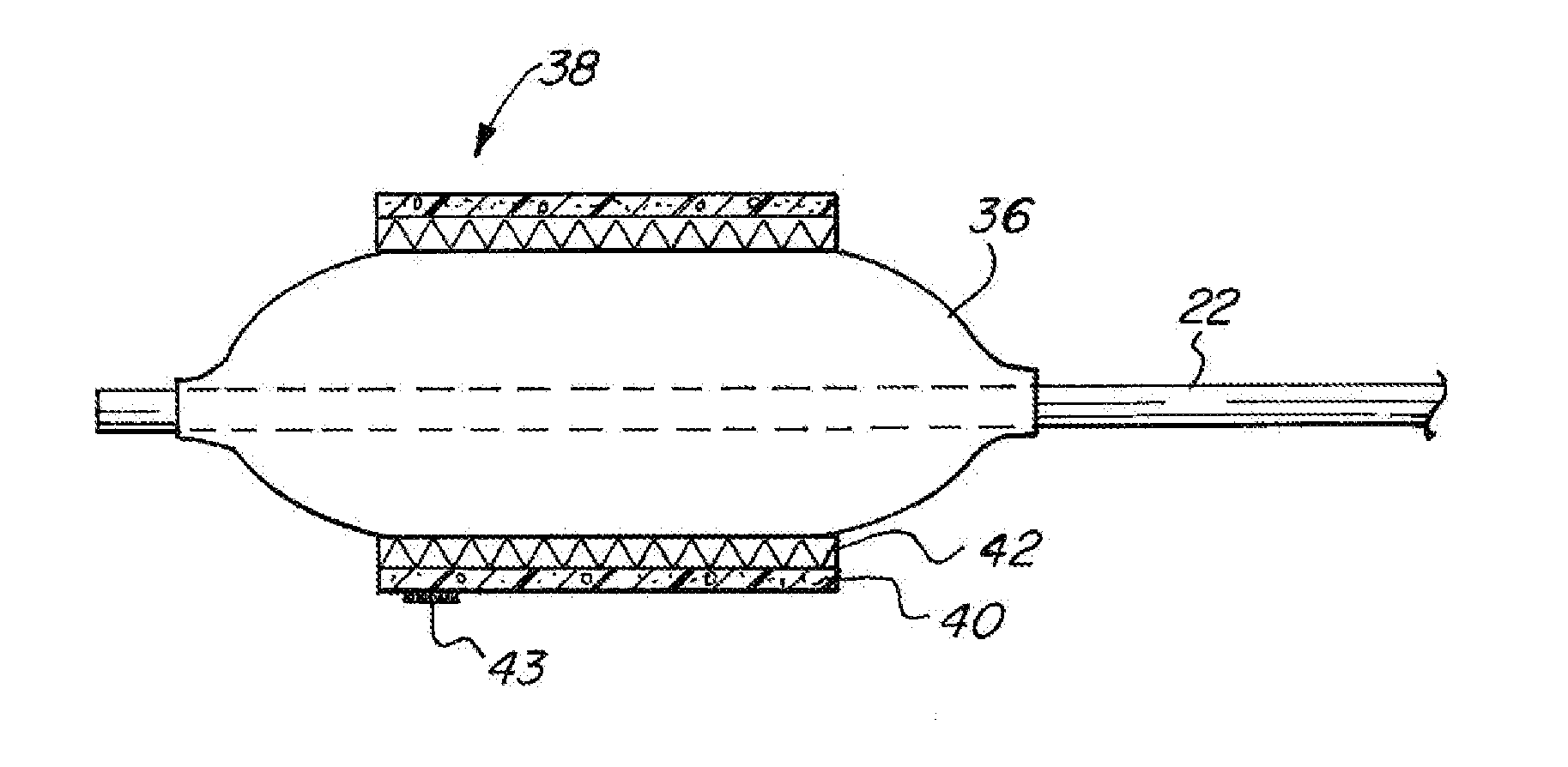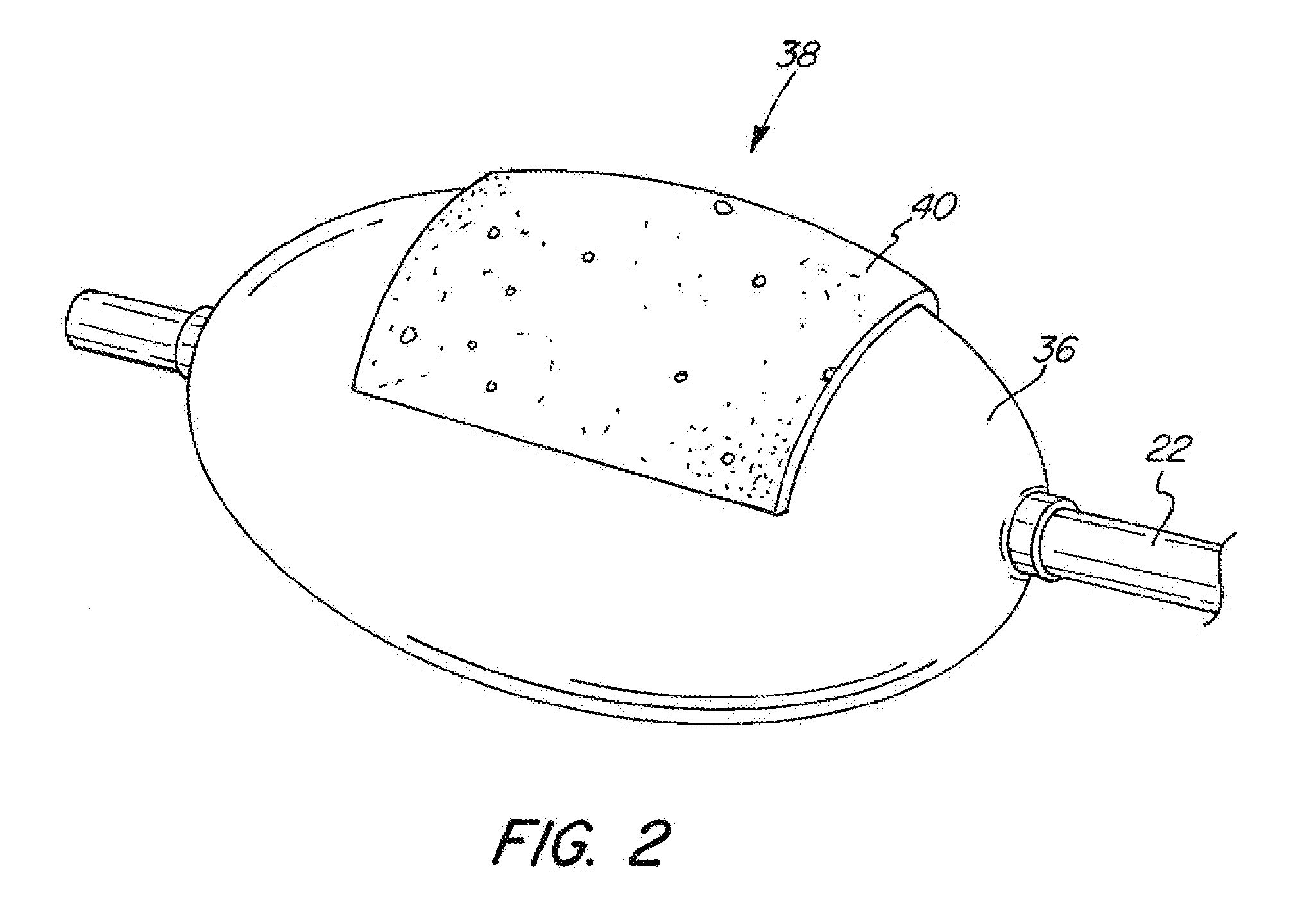Balloon catheter for launching drug delivery device
a drug delivery and balloon catheter technology, applied in catheters, prostheses, blood vessels, etc., can solve the problems of undesirable extravasation of diagnostic or therapeutic agents into tissue, many therapeutic and diagnostic agents in general may not be delivered using, and not be therapeutically effectiv
- Summary
- Abstract
- Description
- Claims
- Application Information
AI Technical Summary
Benefits of technology
Problems solved by technology
Method used
Image
Examples
Embodiment Construction
[0049]The basic components of one embodiment of an adjustable balloon catheter in accordance with the invention are illustrated in FIG. 1. As used in the description, the terms “top,”“bottom,”“above,”“below,”“over,”“under,”“above,”“beneath,”“on top,”“underneath,”“up,”“down,”“upper,”“lower,”“front,”“rear,”“back,”“forward” and “backward” refer to the objects referenced when in the orientation illustrated in the drawings, which orientation is not necessary for achieving the objects of the invention.
[0050]The balloon catheter of the present invention may be used to deliver diagnostic or therapeutic agents to specific locations within a patient's body for diagnostic examination and / or therapeutic treatment. For example, the present invention can be used to deliver drugs, radiation therapies, chemo therapies, pharmacologic medicines, therapeutic agents, immuno-therapies, biologic materials, biologic markers, radiopaque contrasts, diagnostic agents and related technologies to specific cell...
PUM
 Login to View More
Login to View More Abstract
Description
Claims
Application Information
 Login to View More
Login to View More - R&D
- Intellectual Property
- Life Sciences
- Materials
- Tech Scout
- Unparalleled Data Quality
- Higher Quality Content
- 60% Fewer Hallucinations
Browse by: Latest US Patents, China's latest patents, Technical Efficacy Thesaurus, Application Domain, Technology Topic, Popular Technical Reports.
© 2025 PatSnap. All rights reserved.Legal|Privacy policy|Modern Slavery Act Transparency Statement|Sitemap|About US| Contact US: help@patsnap.com



